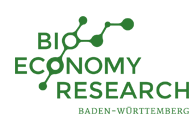Biogas: Potential, land use changes and climatic effects
The analysis of potentials, risks, and opportunities of the bioeconomy must take place in a holistic way when considering various forms of biomass use and supply. Simulation models are a common methodological approach to assess ex-ante market and technological developments, and their impacts. The objectives of this project are to analyze conditions for the production of biogas substrates and their impact on the agricultural sector.
These objectives will be addressed through further development of the European Simulation Model (ESIM), a global partial equilibrium model of the agricultural sector with a special emphasis on the European Union (EU). First, new agricultural byproducts currently utilized for biogas production will be integrated in ESIM in order to analyze interactions between biogas production and the production of these byproducts. Second, CO2 emission coefficients for agricultural production (in Germany, the EU, and the rest of the world) will be introduced into the model so as to enable climate-policy relevant evaluations of bioeconomy scenarios. Third, in collaboration with the Competence Network Modeling the Bioeconomy, several model interfaces will be created. This project will contribute to joint assessments with models of different sectoral coverage, such as the energy model TIMES PanEU and the farm model EFEM of the Baden-Wuerttemberg agricultural sector.
The project aims to provide information about future biomass price levels and availability. Additionally, it will show the environmental impact on greenhouse gas emissions resulting from direct and indirect land use changes.
| Project title | Biogas: Potential, land use changes and climatic effects |
| Institution | |
| Research group | Prof. Dr. Harald Grethe, Dr. Hyung Sik Choi, Dipl.-Ing. agr. Susanne Wagner |
